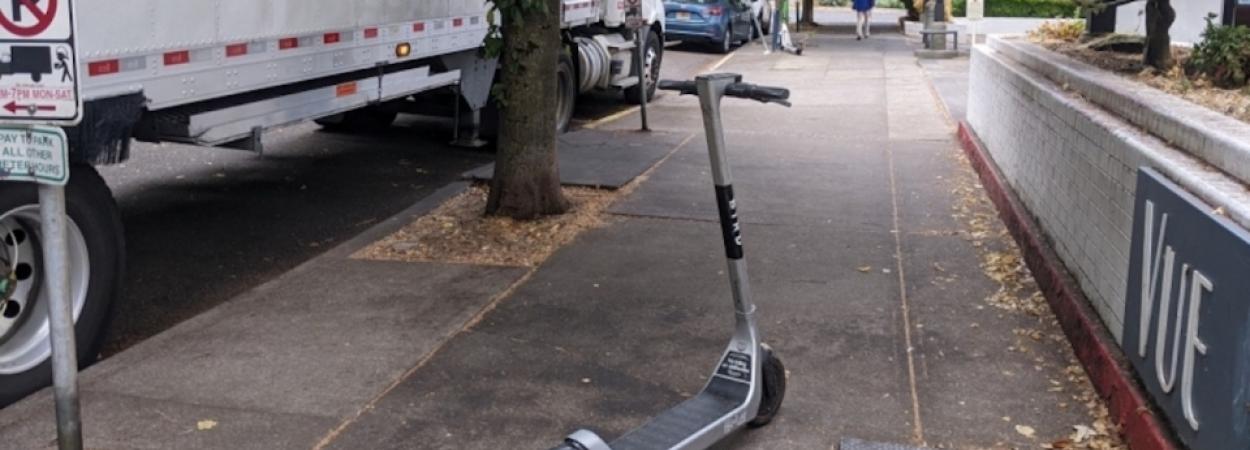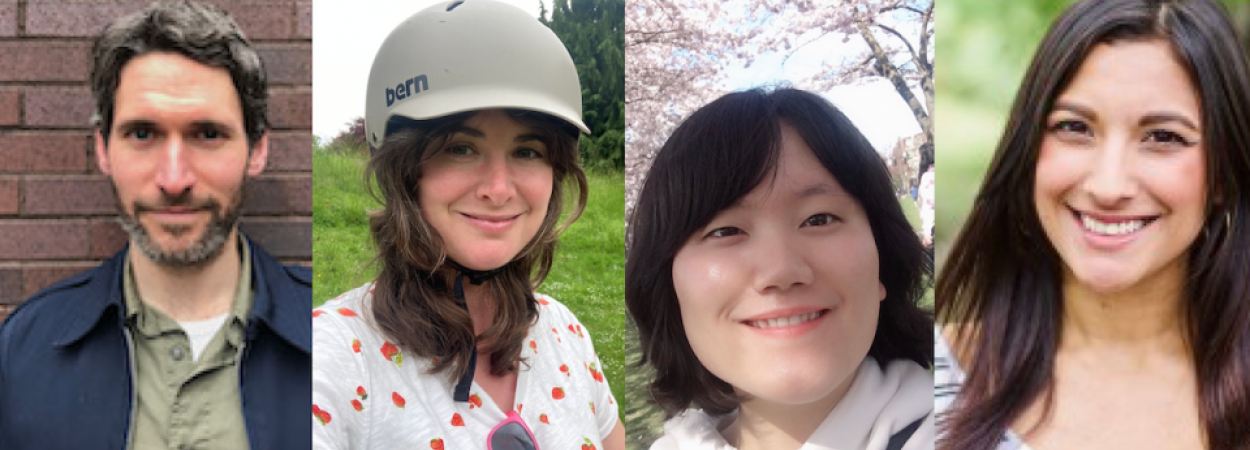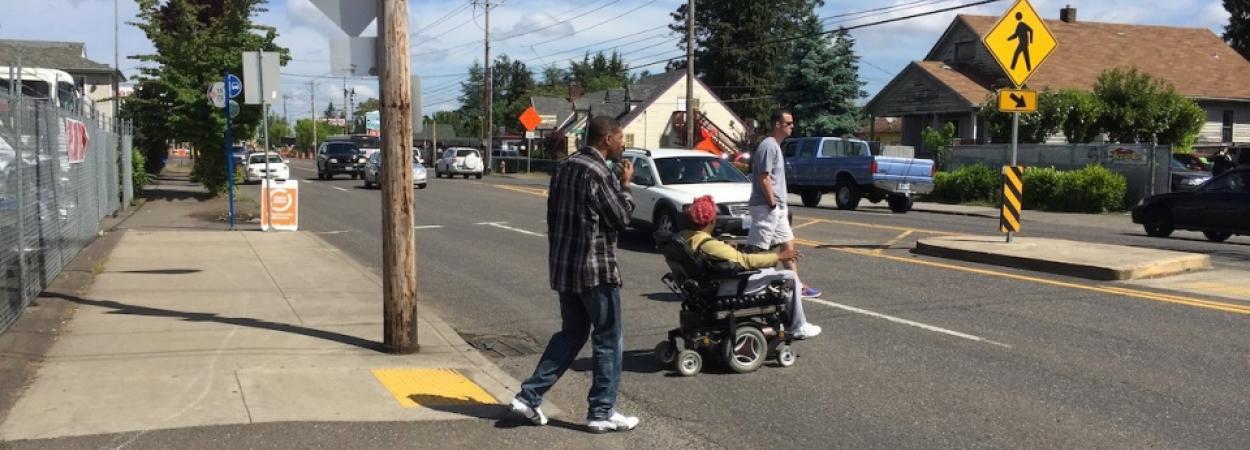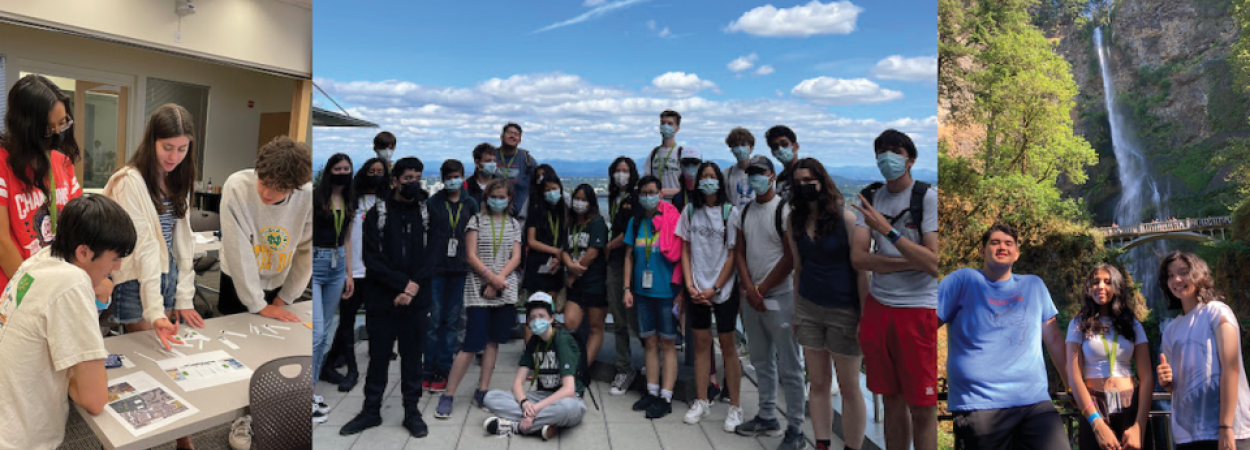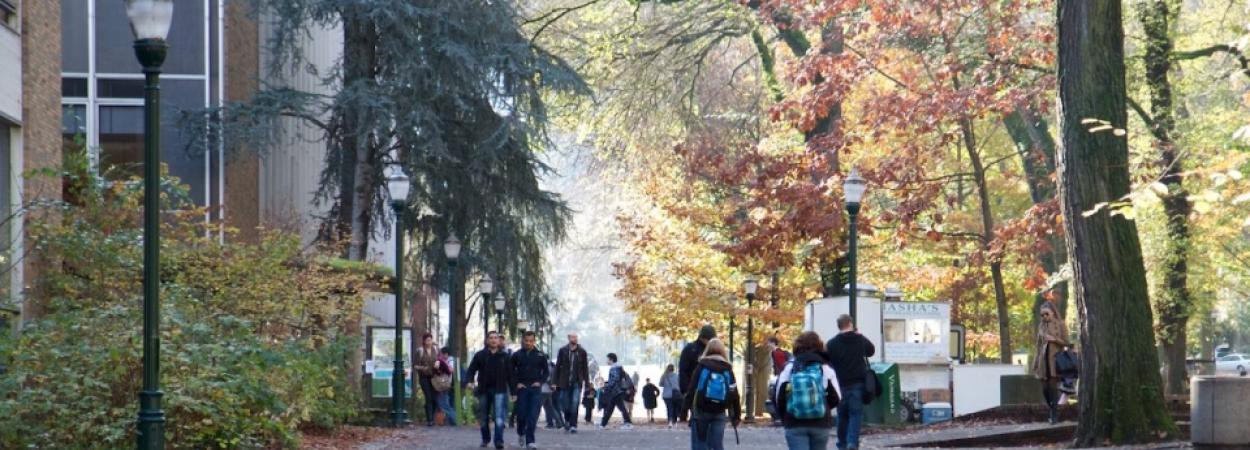In 2019 Olivia Nell wasn't sure what she wanted to study in college. A junior in high school, she discovered a free transportation summer camp at Portland State University (PSU) for high schoolers. After seeing the behind-the-scenes workings of transportation in Portland, Oregon and meeting local professionals, she knew she wanted to pursue: engineering.
"I really enjoyed my time at the camp, and it helped me narrow down my educational interests. I am now in my third year of college at Oregon State University studying mechanical engineering, hoping to focus on renewable energy," Olivia said.
This summer she returned to the camp as a counselor to mentor the next cohort of Oregon high school students. She is one of five past students to do so.
"Three of our counselors this year were past camp students. I think that in itself speaks to the importance of this camp in drawing people to the transportation profession," said Hau Hagedorn, associate director of the Transportation Research Education Center (TREC) at PSU.
Olivia decided to return because she appreciates how the camp positively impacts students: "I wanted to be a part of a team that allows for students to explore various career journeys by traveling around a city and learning about its transportation system," she said.
Hosted by TREC at PSU since 2016, the summer camp is free and open to any Oregon student entering the 9–12 grade and is part of a larger national program funded by the Federal Highway Administration (FHWA): the National Summer Transportation Institute (NSTI). At PSU’s 2022 camp, nineteen students met with professionals, practiced data collection and urban design, and went on daily field trips to places that aren't normally open to the public - clambering through the interior of Multnomah County's bridges, or getting behind the wheel of TriMet's indoor bus driving simulator.
Networking with Professionals
Guest lecturers come from public, private, and nonprofit organizations, and this year's lineup included the Portland Bureau of Transportation (PBOT), the Oregon Department of Transportation, the Washington Department of Transportation, FHWA, EnviroIssues, Safe Routes Partnership, Fehr & Peers, Elcon Associates, The Street Trust, and Go By Bike. They discussed topics ranging from traffic signals to road design, potential career paths, and the intersection of transportation with social and racial equity. Students also had the opportunity to sit down one-on-one with transportation professionals in a career panel and speed networking session.
Introducing Transportation Equity
"Learning about our racial biases and how they play out in our decisions is a lifelong journey, and it’s never too early to start. Giving students the space and tools to lean into this journey is powerful, and provides immense potential for creating equitable change at the individual, institutional and systemic levels as these young leaders begin their careers," said Joey Posada, equity manager at Enviroissues, who led a session on Careers in Transportation.
Many of the camp's lessons connected to themes of equity and mobility justice, communicating the potential for transportation decisions to positively or negatively impact communities. To undo past harms caused by racist policies and urban practices, future professionals need this context, and this year's cohort gave every indication that they do understand and want to build a better future.
"From my brief interactions with the students, it's clear they are aware of the relationship between race and social inequities, and they care about those issues. Covering these topics in summer camp means we are acknowledging their life experiences, and we are also validating that these inequities can be undone," said Maria Sipin, technical assistance manager at Safe Routes Partnership, who taught a session on Racial Equity & Transportation.
A Close Look at Portland's Transportation System
The camp opened on Sunday, July 31, with an orientation to introduce students and parents to the counselors and where they'd be staying. Students get a preview of the college experience, as they live for a week in PSU campus student housing. That afternoon, students enjoyed a jet boat tour of the Willamette River. One student wanted to know, what that had to do with transportation?
"Rivers are vital to Indigenous communities, and serve as important economic ports today. We saw where grain, potash and various commodities are shipped abroad," Hagedorn said in a tweet.
The next day, NSTI got fully underway with classroom sessions in the morning, and an afternoon Multnomah County bridge tour. Students were assigned to work in groups to solve real-world transportation problems, and throughout the week were given the chance to apply what they learned to their group projects.
Other highlights from the week include a trip to the Columbia River Gorge, a tour of TriMet Operations Headquarters, and a ride on the Portland aerial tram following a tour of Go By Bike PDX, the bike valet facility at Oregon Health and Science University. Evening activities at PSU included scavenger hunts, rock climbing, and building bridges out of popsicle sticks to see how much weight they could support. See photos of the 2022 summer transportation camp at PSU here.
Sharing Their Solutions to Real-World Problems
On Friday, the last day of camp, students presented their impressive group projects to their families and the camp instructors.
Group One: SW 4th Avenue from SW Lincoln St to SW Harrison St.
One group tackled a stretch of southwest 4th Avenue from Lincoln to Harrison street, an area that PBOT is currently in the process of redesigning. The students addressed issues such as lack of sidewalk space and the need for facilities like trash cans, water fountains, shade, and seating for pedestrians. They proposed repainting parking zones, improving the bike and pedestrian infrastructure, and adding street furniture to make the area feel safer and more welcoming for all road users.
Group Two: The Saint's Row Superblock
The second group of students made pedestrian improvements to a "superblock" in downtown Portland, a complex of buildings connected by narrow walkways, without through streets, in an area roughly nine times the size of a typical Portland city block. Their design was aimed at making the space easier to traverse for people walking and biking.
Group Three: SW 4th Avenue from Harrison to Market Street
The challenge issued to this group was to make this block, which currently has three lanes of one-way traffic with parking lanes on both sides, a more welcoming area for active transportation users. They designed the street to move away from the car-centered design, focusing on improving the pedestrian and cycling environment.
While the hope is to inspire students to pursue careers in transportation, it’s just as valuable for them to leave the camp with an enthusiasm and interest in how communities can be connected safely and efficiently in their city and beyond.
On the last day of camp a student shared, “I have a newfound appreciation for the city and the different modes of transport that are accessible to people.”
Interested in next year's summer transportation camp at PSU? Sign up here to be notified when applications open.
The camp was funded by the Federal Highway Administration (FHWA) and the Oregon Department of Transportation (ODOT), and hosted by Portland State University's Transportation Research and Education Center (TREC). TREC is home to the U.S. DOT funded National Institute for Transportation and Communities (NITC), the Initiative for Bicycle and Pedestrian Innovation (IBPI), PORTAL, BikePed Portal and other transportation grants and programs. We produce impactful research and tools for transportation decision makers, expand the diversity and capacity of the workforce, and engage students and professionals through education and participation in research.

